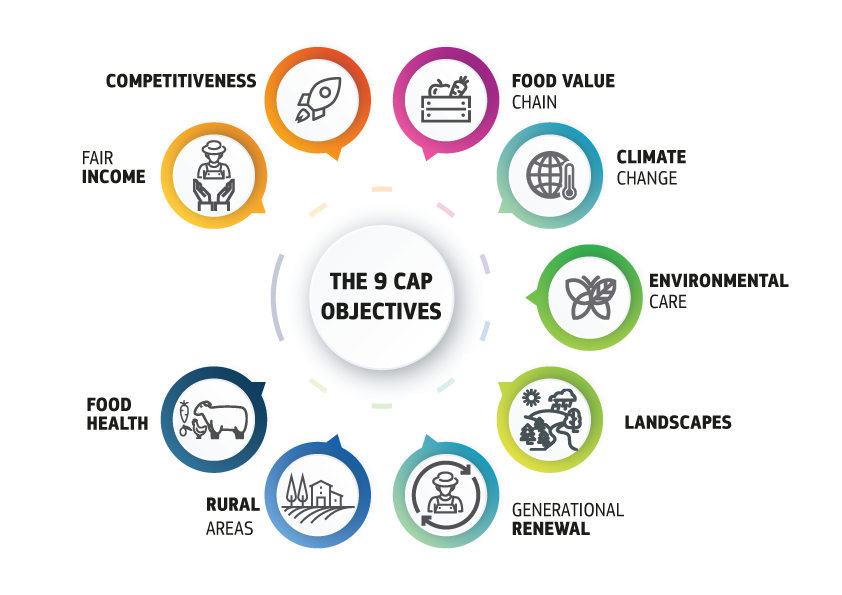The New CAP: Living up to the Expectations of Greening the European Agricultural System?
After a reform process lasting three years, the European Parliament, the Council of the EU and the European Commission finally agreed on the new Common Agricultural Policy (CAP) in June 2021, before it was formally adopted in December 2021. It is scheduled to be implemented beginning of 2023 lasting until 2027 with a budget of 387bn EUR and promises to deliver a fairer, greener, and more flexible framework.
Given that agriculture is both one of the main emission sources and drivers of environmental degradation in the EU, how subsidies are allocated and spent is key to reverse this dynamic. In the following, we will look at the main objectives and areas of reform of the forthcoming CAP, before we proceed to look at the potential for emission reduction and biodiversity protection and restoration.
The nine objectives and key areas of reform
The nine objectives. The nine objectives focus on social, environmental, and economic goals and form the basis on which Member States develop their strategic plans on how to implement the CAP as visualized below.
Source: European Commission
In specific, the objectives are:
Ensure fair income to farmers
Increase competitiveness
Rebalance the power in the food chain
Climate change action
Environmental care
Preserve landscapes and biodiversity
Support generational renewal
Vibrant rural areas
Protect food and health quality
Key areas of reform. Here the main three categories regarding policy reforms are a) greening the CAP, b) a fairer CAP, and c) improving competitiveness.
As for greening the CAP, the goal is to align actions with the Green New Deal (GND) targets. This implies that national strategic CAP plans must be in line with climate targets with additional emphasis on biodiversity and rural development.
In terms of a fairer CAP, the main objective is to allocate spending to those who need it most, mainly small, and medium-sized farmers through re-distribution of income support.
Finally, improving competitiveness should lead to a stronger position of farmers in the food value chain by improving their bargaining power, while also aiming to align supply and demand through market orientation to avoid production surpluses.
Implications for climate targets and biodiversity
The agricultural sector accounts for around one tenth of emission in the EU. Hereby the main emission sources are methane from livestock and nitrous oxide from synthetic fertilizers and manure management. Resulting from this, decarbonising the sector while ramping up environmental conservation efforts is key to reach the blocks’ net zero target by 2050.
The most important instrument in this context are “Eco-schemes” unlocking new funding and incentives for practices beneficial to the environment such as carbon farming and improved nutrition management. Member States are required to allocate at least 25% of spending to such schemes. Other measures include “Conditionality”, where farmers must fulfil certain climate and environmental requirements such as crop rotation to be eligible for support and advancing environmental objectives in rural areas through the European Agricultural Fund for Rural Development.
The response from climate scientists, NGOs and other activist groups has been negative overall. Indeed, while there is some more budget for greening the sector, there is still a lot of flexibility on how it is spent in the end. The key problem is that there are no specific, legally binding targets in the CAP that would align it with the EU’s climate targets.
On the contrary, the European Commission itself expects all sectors to continuously decarbonise until 2050 except for the agricultural sector. This is because it sees mitigation potential as minimal since it would mostly imply dietary changes and a significant reduction in synthetic fertilizer, starkly contrasting with the status quo.

